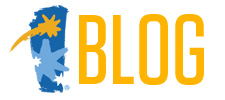As students head off to college, dealing with the costs of education can be overwhelming. Add in the cost of living like food, books, and basic accommodations like furnishing a college room and the cost can grow quickly. Good news, financial aid has taken these things into account when calculating their cost of attendance. So, if you choose, you can maximize your financial aid to cover college-related costs. That means taking advantage of all your options, like scholarships, grants, work studies, on-campus jobs, and even student loans.
The best solution is to get the most “free money” first. Here are some quick tips for getting more free money.
- Apply early, apply often — apply for every scholarship and grant you can find, even if it may not seem like a perfect fit for your major or field of study. If you don’t apply, you can’t get it. You may not get everything you apply for, but getting your name out there is the only way to get ahead. >> West Community awards scholarships every year. Check our website starting in January!
- Search local — many local companies are looking for talented local students to help out. It gives them a good connection with you and the community and gives you the free money you need. Start by calling reputable local companies and asking them if they have a scholarship program.
- Look for work study programs — these programs can be hard to come by since most of them are need-based, but apply yourself early and get your name in the running for these positions and you’ve got a better chance at money that doesn’t have to be paid back.
Think about college as a full-time job. Colleges figure in the additional costs of living, including things like computers and transportation. That means that your financial aid, including loans can cover some of these costs. Now, make sure you don’t borrow too much, or try to live beyond your means, but using some of your financial aid to cover the basics is okay. Never borrow more than you need and always try to get as much free and cheap money from grants, scholarships and federal aid as possible. If you’ve exhausted your other options student loans can help you get by while you’re in school. Here are some tips for using them wisely.
- Seek free money first — always look for money you don’t have to pay back. Don’t be lazy here; a little work up front pays off huge in the long run. Some great places to start are your college financial aid office, your local library, or use this online search engine to expand your search.
- Look for alternative resources — check out the campus and community library for books. Online resources often sell books at a discount. Buy used. Shop at thrift stores or discount groceries to reduce your costs. Clip coupons. There are lots of creative ways to reduce your costs so you don’t have to use student loans to get by.
- Look for work — working at least part time is a great way to offset the costs of college. Many employers are looking for talented college students, and they like the flexible hours that students are able to work. Check into part-time jobs that work around your schedule to help with the costs of college.
- Use your financial aid wisely — never borrow too much or use your student loans for purchases that aren’t for college. That doesn’t mean taking your extra student loan money and getting a big TV for your dorm room. That means being smart with your purchasing and realizing that a refund is still part of the loan, and you’re required to pay it back with interest.
- If you don’t need it, pay it back — It’s as simple as that. If you use the money, you’re taking a loan, so if you can offset your loans with work or other money, you’re better off in the long run. If you don’t need the money from your loan, pay it back immediately and save yourself long-term interest costs.
Never too late to save
It might feel like it’s too late to get any financial help when you’re already in college. But with a little effort, you can save money and reduce the amount you’ll owe in the long run. That will make your life easier when it comes to repaying your student loans. Check out these quick steps to make sure you’re giving yourself the best start possible.
- Keep Saving — Saving early is the best way to reduce your long-term debt and student loans throughout college. Every little bit helps, so saving money from work, birthdays, gifts and other sources is still important. Why not ask your family to put money into your savings account to pay for college instead of an expensive present? Continuing to save and using that money to pay for part of your college experience – even if it’s just books or furnishing your dorm room – will help you avoid additional future debt.
- Apply for Scholarships and Grants — Just because you’re in college doesn’t mean you can’t keep applying for scholarships and grants. In fact, many scholarships and grants are available based on financial need, merit, and other criteria even for students already attending school. Most are awarded on a deadline or first-come, first-served basis. That means, the earlier and more frequently you apply for these resources, the more likely you are to get them. While you won’t get every scholarship you apply for, they all help and can really add up. Some great resources for scholarship and grant ideas are your college financial aid office and your local library. Ask for the “scholarship book.”
- Write at least one really good essay — If you don’t already have a great essay, take the time to write one which will help you throughout your scholarship and grant application process. Most essays will focus around a common theme like “why I need this scholarship,” “tell us about yourself,” or “how will this scholarship help you accomplish your career goals.” The point of essays is to give the applicant a chance to help the folks giving the scholarship get to know them. This is the applicant’s best chance to set themselves apart from the other applicants. Make sure to relate your answers to the questions instead of making a laundry list of accomplishments. Good things to mention may be if you’re the first person in your family to go to college or you’ve overcome adversity. Try to think creatively and set yourself apart from the crowd with your answers. Always make sure to follow the guidelines of the scholarship, which shows your ability to reason and follow instruction. Try to tie your answers into the theme of the scholarship to prove that you’re the best choice for the investment the company wants to make. Writing one good essay can be a great starting point since you can always edit your response for other scholarships. Remember it’s not plagiarism if you wrote it, so it’s okay to copy and paste from other essays you have written, just make sure your material fits in the scholarship guidelines.
- FAFSA — If you haven’t filled out the Free Application for Federal Student Aid (FAFSA) for college, you need to do that now! The FAFSA is your gateway to federal student loans, the cheapest form of student loans for most borrowers. You must complete this form each year to receive any federal, state, or college money and some scholarships and grants require it as well. The FAFSA asks basic information regarding the borrower’s income, dependency status, and savings to determine financial need. It is important to fill this form out as early as January 1st of the academic year you’re applying for. That will make the most possible money available to you.
- Ask for help — If you’ve already completed the basics and you’re still having trouble paying for college, or worried that your savings won’t be enough, visit your college financial aid office. Their job is to help students make ends meet during college so they can get through college and graduate with the least amount of debt. They want to see you succeed, so stop in or call the office if you run into issues.
If you’ve exhausted all the resources for financial aid, private student loans can fill the gap that is left between the Cost of Attendance (COA) and the Federal loans/aid you’ve received. Private loans are not offered through the federal government, so it’s important to look for a loan program from an institution you trust, like your credit union’s Student Choice solution. These loans are in the name of the student but often require a co-signer. They are not guaranteed or subsidized by the government. Instead, they are based on the credit qualifications of the student and/or the credit qualifications of any co-signer they have on the loan.
For more information about the FAFSA, federal student loans, and other programs, please take a look at the links below:




